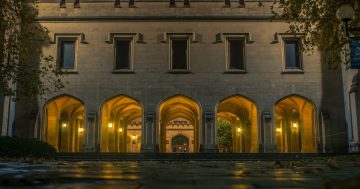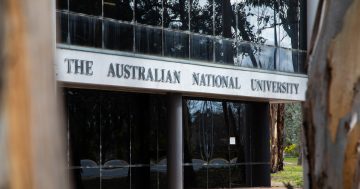 Adam Lucas says while international students and the revenue they generate for Australia are undoubtedly big business, that business is over-reliant on a few of our close neighbours to fill a yawning and growing funding gap.
Adam Lucas says while international students and the revenue they generate for Australia are undoubtedly big business, that business is over-reliant on a few of our close neighbours to fill a yawning and growing funding gap.
The value of international student revenue to the Australian economy has become a common trope in the mainstream media.
A 2019 press release from the former Coalition Minister for Education, Dan Tehan stated that Australia’s total economic benefit from its “education exports” was $37.6 billion in 2018-19.
This made higher education the country’s third-largest export earner, second only to coal and iron ore.
The three largest source nations for this economic boon were China ($12.1 billion), India ($5.5 billion) and Nepal ($2.6 billion).
Echoing these claims, Universities Australia reported that during the previous financial year, the value of international education to Australia was $31.9 billion.
Given the fact that total revenue for Australia’s higher education system (HES) averaged around $37 billion over the last several years, the claim that international students generate domestic economic activity that is more than 80 per cent of the tertiary sector’s total revenue sounds impressive — but is this rosy narrative true?
Up until the introduction of the Higher Education Contribution Scheme (HECS, now HELP) as a central plank of the so-called Dawkins Reforms in 1989, the Federal Government provided the lion’s share of tertiary education funding.
In 1990, around 80 per cent of the costs of running the HES were provided by the Government. The remainder was sourced from a mixture of State Government grants, private benefactors, commercial licences, and other non-Government sources.
By 2019, it was only 33.5 per cent, placing Australia near the bottom of OECD rankings for public investment in tertiary education.
As the Commonwealth has reduced its funding, universities have been required to “operate like businesses” and adopt corporate models of governance, management, and administration.
Because the majority of university revenues are from teaching, the obvious strategy to secure additional revenue has been to enrol more students.
When caps on student enrolments were gradually lifted by the former Labor Government from 2009, this became a practical possibility.
However, there were demographic limits on the number of additional domestic students that could be attracted to university, whereas the potential for growth in the overseas ‘student market’ in South and East Asia was potentially limitless.
Successive Governments, preoccupied with imposing greater user-pays and market-driven models on the HES, were sympathetic to the international student marketing strategy and actively encouraged it.
State and Federal Governments passed enabling legislation providing university executives and senior managers with far more autonomy to aggressively pursue these opportunities.
In 1990, there were around 25,000 international students enrolled across the country, comprising just 5.4 per cent of all students. By 2019, that proportion had grown to 32.4 per cent.
Consequently, while the number of domestic students has doubled over this 30-year period, it increased more than 20-fold for international students.
The main reason for this massive increase in the overall proportion and number of international students studying in Australia is the significant reduction in Government funding for tertiary education in real terms since the early 1990s.
According to Government figures compiled by the Grattan Institute, total Government expenditure on higher education in 2017-18 was $13.86 billion, including Government research funding of $3.77 billion.
This is considerably less than the Government has been spending on private schools since at least the early 2000s.
The Federal Department of Education reported in May that recurrent funding for Catholic schools in 2023 will be $9.3 billion with an additional $7.4 billion dedicated to independent schools.
If Australians are concerned that private school funding has increased at five times the rate of public school funding, they should be equally if not more concerned that the Government continues to spend far more money supporting private schools than it does on public universities.
More than 80 per cent of the fees paid by international students went to Australia’s 37 public universities, which drew between a quarter and a third of their total fee revenue from international students.
The majority of those students are enrolled in the Group of Eight universities, most of which are in Melbourne and Sydney.
In the year before COVID-19, the Universities of Sydney and Melbourne were receiving around 34 per cent of their annual revenue from international students.
In 2018, 40 per cent of all Victorian HES students, 32 per cent of ACT students, and 30 per cent of all NSW students were international.
Western Australia and South Australia both had around 26 per cent, while Queensland and Tasmania had the lowest proportions of the States, at 23 per cent and 20 per cent, respectively. The outlier was the Northern Territory, at only 17 per cent.
Although international students have undoubtedly provided a significant source of revenue for a number of universities, as we can see from these figures, that revenue has not been evenly distributed.
A handful of the larger urban universities have been able to leverage their reputations and locations far more effectively than their regional and smaller counterparts.
Furthermore, and perhaps more importantly, there is now a considerable body of evidence to indicate that the Australian Bureau of Statistics (ABS) has been routinely engaging in obfuscation of the real value of international students to the Australian economy.
Economist, Cameron Murray has found that the ABS is including as “export income” funds which international students earn while living and working in Australia.
After probing the ABS about several of its assumptions, Murray concluded that the real value of international student exports is half or less than that claimed by the ABS.
Contrary to what Universities Australia and Government Ministers would have us believe, therefore, we should in the future treat with extreme scepticism their claims that tertiary education is the third highest export earner for Australia.
*Adam Lucas is a Senior Lecturer in the School of Humanities and Social Inquiry, University of Wollongong.
This article first appeared on the Australian Outlook page of the Australian Institute of International Affairs’ website.











